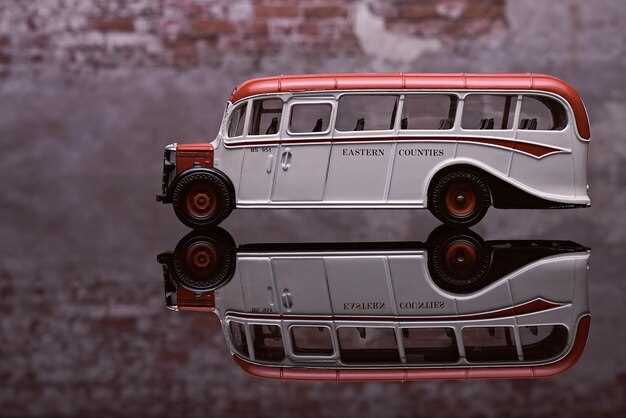The Evolution of VW Touring Cars

The evolution of touring cars has been significantly shaped by the innovations and contributions of Volkswagen (VW). Established in the 1930s, VW laid the groundwork for a new segment of the automotive market, with a particular focus on practicality and efficiency. This commitment to producing reliable vehicles resonated through the decades, ultimately influencing touring car design and performance.
Throughout its history, VW has demonstrated an unwavering dedication to engineering excellence and versatility, crafting touring cars that cater to both everyday driving and motorsport applications. The company’s journey from early models to contemporary designs showcases a remarkable progression, marked by technological advancements and a keen understanding of consumer needs.
As we delve into the history of VW touring cars, we will explore how their engineering, aesthetic choices, and competitive spirit have continually redefined what a touring vehicle can be. From iconic models that captured the public’s imagination to cutting-edge designs that push the boundaries of performance, VW’s touring cars reflect a unique blend of history and innovation.
Key Milestones in VW Touring Car Evolution

The evolution of VW touring cars has been marked by significant milestones that reflect the brand’s innovative spirit and commitment to racing excellence. One of the earliest pivotal moments occurred in the late 1950s with the launch of the VW Type 3, which introduced a more powerful engine and a refined body design, setting a new standard in the touring car category.
In the 1970s, the introduction of the VW Golf marked a turning point in the company’s history. The Golf GTI, launched in 1976, became an icon of the hot hatch movement, combining practicality with impressive speed and agility. This model not only performed well on the track but also appealed to everyday drivers, solidifying VW’s presence in both racing and consumer markets.
The 1980s further showcased VW’s racing pedigree with the introduction of the VW Golf II, which participated in various motorsport events, including the World Rally Championship. This era emphasized the brand’s ability to adapt and thrive in competitive environments, enhancing its reputation for durability and performance.
Entering the 1990s, the VW Jetta gained prominence in the touring car scene, particularly with the introduction of the Jetta GLI. This model was recognized for its racing capabilities, making a significant impact in national touring car championships across Europe and North America.
The 2000s saw the debut of the Volkswagen Scirocco, which captured the essence of touring car racing with its sporty design and dynamic handling. The Scirocco R was particularly successful in various racing leagues, demonstrating VW’s continuous dedication to pushing the limits of performance.
In recent years, the advent of electric vehicles has spurred VW to innovate within the touring car segment once again. The ID.4, as part of the ID series, showcases the brand’s commitment to sustainable racing technologies while maintaining the thrill associated with touring cars. These developments not only highlight the history of VW in racing but also signal a progressive shift towards a greener future.
Overall, the journey of VW touring cars is a testament to the brand’s ability to blend history, performance, and innovation, ensuring its place in the racing world for decades to come.
Influence of Racing on VW Touring Car Design

The history of Volkswagen (VW) touring cars is deeply intertwined with the world of racing. The principles derived from competitive motorsport have significantly shaped the design and performance of VW models intended for everyday driving as well as those designed specifically for racing.
From the early days of the brand, VW recognized the importance of racing as a proving ground for innovation. The success of the VW Beetle in various competitions highlighted the importance of aerodynamics and lightweight construction, elements that were gradually integrated into their touring car lineup. The engineering lessons learned from racing helped in refining chassis dynamics and improving engine performance, ultimately influencing customer-facing models.
In the late 1970s and 1980s, the introduction of the VW Golf marked a turning point–drawing heavily from racing heritage. The incorporation of features such as a low center of gravity and improved suspension directly reflected insights gained from motorsport experiences. The VW Golf GTI, often dubbed the original hot hatch, showcased how racing inspirations could translate into practical touring car designs that appealed to a broader audience.
Racing also played a crucial role in VW’s commitment to technology advancement. Innovations such as turbocharging and fuel efficiency enhancements emerged through the company’s participation in competitions like the World Rally Championship. These technologies found their way into touring car models, ensuring that drivers benefit from race-derived enhancements in reliability and performance.
Moreover, the synergy between VW’s racing division and its manufacturing teams fostered a culture of continuous improvement. Feedback from track testing led to refined designs and better-engineered components in touring cars. This practice not only enhanced the racing pedigree of VW vehicles but also strengthened their everyday functionality.
In conclusion, the influence of racing on VW touring car design is unmistakable. The commitment to performance, safety, and technology developed through competitive experiences has consistently shaped VW’s approach to crafting vehicles that resonate with both enthusiasts and everyday drivers alike. The legacy of racing continues to drive innovation within the VW touring car lineup, ensuring that each model reflects a rich history steeped in performance excellence.
The Role of VW in Modern Touring Car Championships
Volkswagen (VW) has established itself as a key player in modern touring car championships, significantly influencing the competitive landscape. The history of VW’s involvement in motorsport dates back several decades, with a focus on innovation and performance. The brand has continuously developed its touring car models to meet the evolving demands of both regulations and drivers.
In recent years, VW has embraced the World Touring Car Championship (WTCC) and the TCR series, where its vehicles have consistently demonstrated reliability and speed. The VW Golf GTI, for instance, has become a renowned contender, showcasing the brand’s engineering excellence. Its turbocharged engines and state-of-the-art technology provide a competitive edge that resonates with teams and fans alike.
Moreover, VW’s investment in factory-backed teams enhances its presence in these championships, allowing for well-coordinated strategies and support systems. The brand’s commitment to motorsport reflects not only a passion for racing but also a desire to gather data and feedback that can be translated into improvements for road-going models.
As a result, VW’s participation in touring car competitions not only showcases the brand’s vehicles but also serves as a platform for technological advancements. This synergy between racing and production cars has firmly positioned VW as a leader in the touring car category, earning them numerous titles and accolades over the years.



